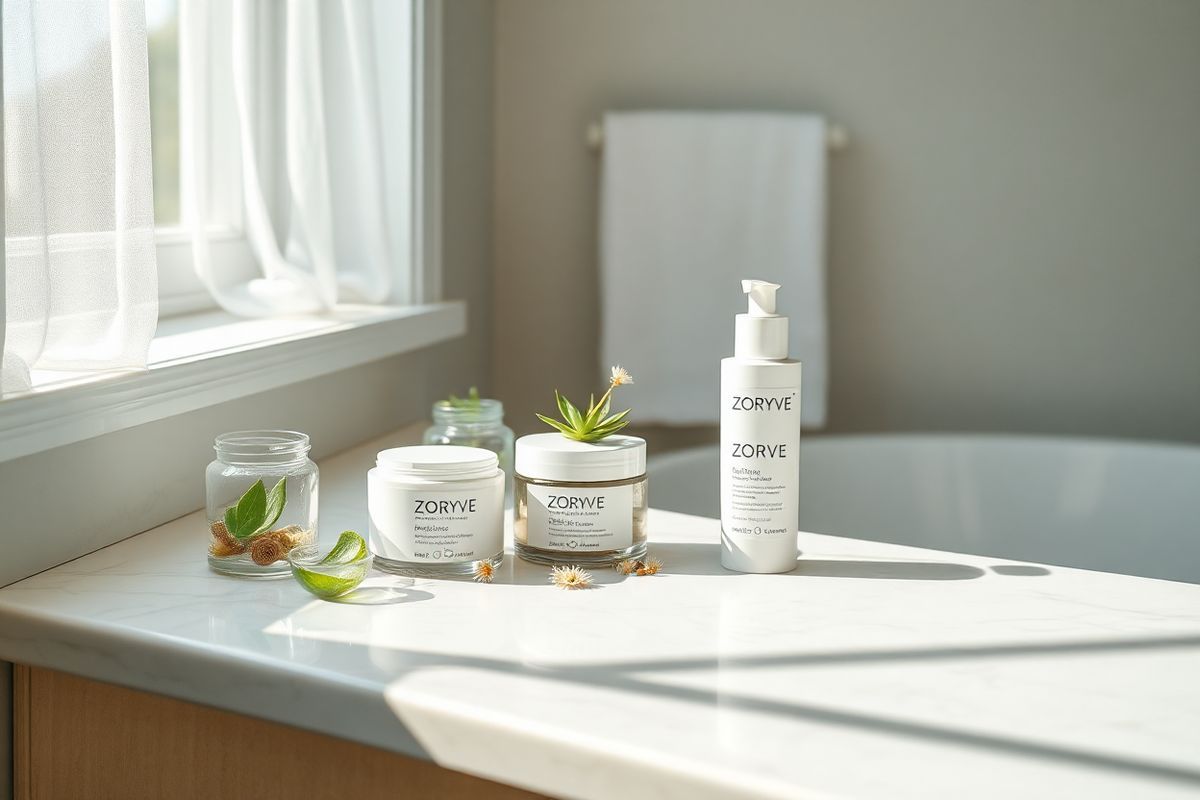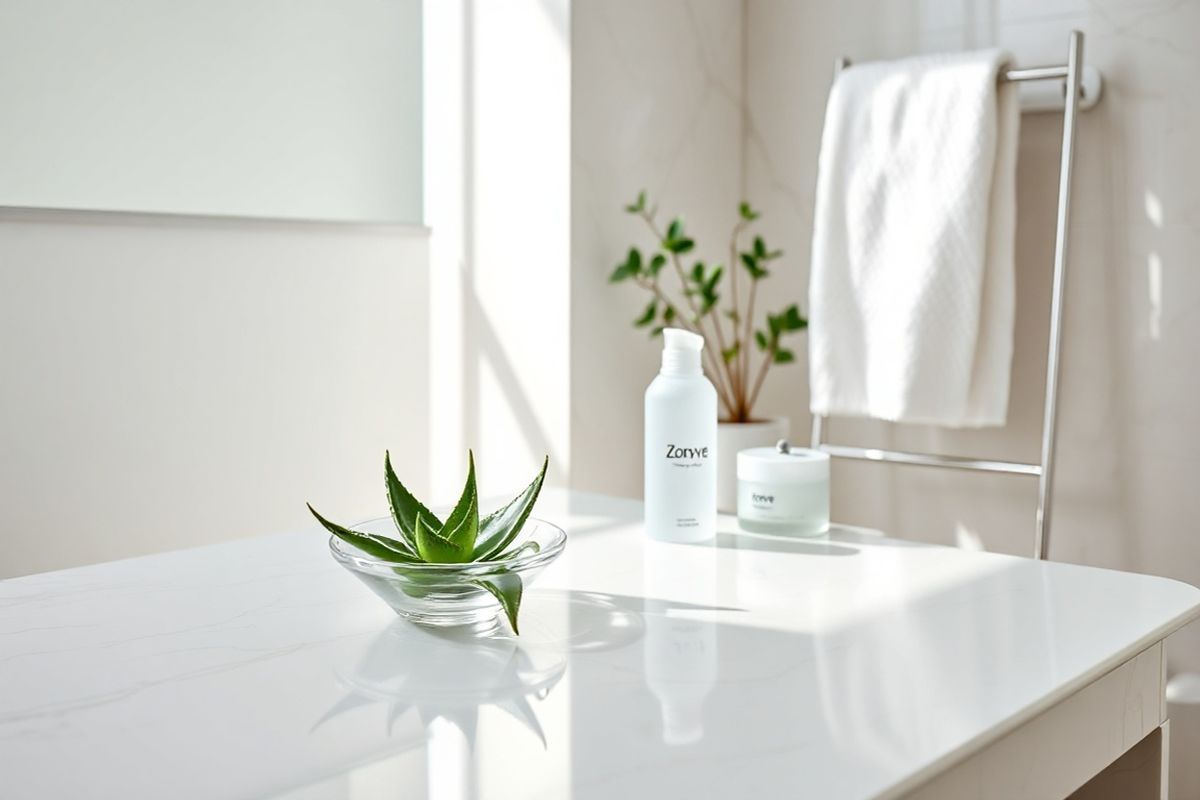Table of Contents
Understanding Zoryve: What You Need to Know About Roflumilast

zoryve, a topical treatment containing Roflumilast, has gained significant attention in dermatological circles due to its unique mechanism of action as a phosphodiesterase-4 (PDE4) inhibitor. Unlike traditional corticosteroids, which primarily reduce inflammation through broader mechanisms, Roflumilast specifically targets the PDE4 enzyme, which plays a crucial role in the inflammatory pathways of various skin conditions, including psoriasis and atopic dermatitis. The selective inhibition of PDE4 leads to an accumulation of cyclic adenosine monophosphate (cAMP), a signaling molecule that modulates inflammatory responses by inhibiting the release of pro-inflammatory cytokines (Kędra & Reich, 2024).
This mode of action is particularly advantageous for patients who require long-term management of chronic skin conditions, as Roflumilast does not carry the same risks of skin thinning and other side effects associated with prolonged corticosteroid use (FAQ – Zoryve, 2023). The FDA has approved Zoryve for the treatment of plaque psoriasis in patients aged 12 years and older, marking a significant step forward in the management of this chronic condition.
Exploring the Different Forms and Strengths of Zoryve
Roflumilast is available in two primary formulations: a cream (0.15%) and a foam (0.3%). Each formulation is designed to cater to different patient needs and preferences, making it easier to integrate into daily routines.
Roflumilast Cream (0.15%)
Zoryve cream is particularly effective for localized treatment of plaques and is suited for patients with atopic dermatitis. Its formulation allows for easy application, which is vital for patient compliance. Clinical studies have shown that Zoryve cream can significantly improve symptoms, with approximately 32% of patients achieving clear or almost clear skin after four weeks of use (FAQ – Zoryve, 2023).
Roflumilast Foam (0.3%)
On the other hand, the foam formulation is especially beneficial for treating seborrheic dermatitis and can be applied to larger areas of the skin. The foam’s consistency allows for better spreadability and absorption, which can enhance its effectiveness. In phase 3 trials, 79.5% of individuals treated with Zoryve foam achieved improvement in their conditions after eight weeks (FAQ – Zoryve, 2023).
| Formulation | Strength | Indication | Key Efficacy Data |
|---|---|---|---|
| Roflumilast Cream | 0.15% | Atopic Dermatitis | 32% achieved IGA success after 4 weeks |
| Roflumilast Foam | 0.3% | Seborrheic Dermatitis | 79.5% achieved IGA success after 8 weeks |
How to Properly Use Zoryve for Maximum Effectiveness

For optimal results, Zoryve should be applied as a thin film to the affected areas of skin once daily. It is essential that the skin is not wet prior to application, particularly for the foam formulation, as moisture can hinder the absorption of the medication. Patients should gently massage the cream or foam into the skin until it is fully absorbed.
Consistency is key in achieving the best therapeutic outcomes; therefore, patients are encouraged to establish a daily routine that incorporates Zoryve into their skincare regimen. Additionally, it is advisable to monitor for any adverse reactions, particularly during the initial stages of treatment, to ensure that the product is well-tolerated.
Safety and Side Effects: What to Expect When Using Roflumilast
While Zoryve is generally well-tolerated, some patients may experience side effects. The most common adverse reactions reported in clinical trials include headache, application site pain, and nasopharyngitis (FAQ – Zoryve, 2023). These side effects are typically mild and transient, and most patients do not need to discontinue treatment. However, it is essential for users to remain vigilant and report any persistent or severe reactions to their healthcare provider.
Furthermore, the risk of skin irritation or other local reactions may be minimized by ensuring that patients apply the medication as instructed and refrain from using it on broken or infected skin.
The Benefits of Zoryve: Transforming Treatment for Dermatitis and Beyond
The introduction of Zoryve into the therapeutic landscape represents a significant advancement in the management of dermatitis and psoriasis. By offering a targeted approach to inflammation control without the adverse effects associated with traditional corticosteroids, Roflumilast provides patients with a viable alternative for long-term management of chronic skin conditions.
Clinical trials have demonstrated that Zoryve not only improves skin clearance but also enhances overall patient satisfaction and quality of life. The ability to effectively manage symptoms with a topical agent reduces the need for systemic therapies, which often come with a higher risk of side effects and require more intensive monitoring (Kędra & Reich, 2024).
FAQ
What conditions can Zoryve treat?
Zoryve is primarily indicated for the treatment of plaque psoriasis and atopic dermatitis. It is FDA-approved for patients aged 12 years and older.
How should Zoryve be applied?
Zoryve should be applied once daily as a thin film to the affected areas of skin. Ensure that the skin is dry before application for optimal absorption.
Are there any common side effects?
Yes, common side effects may include headache, application site pain, and nasopharyngitis. These are generally mild and transient.
Can Zoryve be used with other medications?
It is essential to consult a healthcare provider before using Zoryve in conjunction with other treatments for dermatitis or psoriasis to avoid potential interactions.
How long should I use Zoryve?
The duration of use will depend on the individual treatment plan established with your healthcare provider, but clinical trials have typically assessed efficacy over 4 to 8 weeks.
References
-
Kędra, K., & Reich, A. (2024). Clinical Utility of Various Formulations of Calcipotriene and Betamethasone Dipropionate for the Treatment of Plaque Psoriasis in Patients Aged 12 Years or Older. Drug Design, Development and Therapy, 18, 113-127. https://doi.org/10.2147/DDDT.S240867
-
FAQ – Zoryve (roflumilast foam 0.3% or cream 0.15%). (2023). National eczema Association. https://nationaleczema.org/faq-zoryve-roflumilast-foam-0-3/
-
Chiang, C. C., Cheng, W. J., Dela Cruz, J. R., et al. (2024). Neutrophils in Atopic Dermatitis. Clinical Reviews in Allergy & Immunology. https://doi.org/10.1007/s12016-024-09004-3



